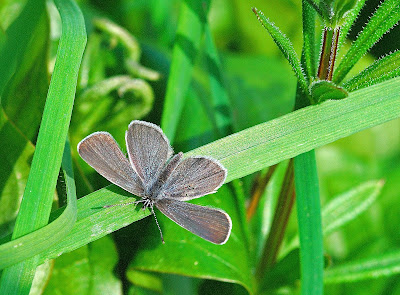The Small Blue is in fact the smallest of all British butterflies.Its flight period is normally mid-May to late June but perhaps because of the summer-like weather we are experiencing at present in the UK early emergence is possible.Even so the 30th March is alarmingly early for this species.
On the Isle of Wight we can enjoy exceptionally mild weather and the sight today of the Small Blue at Afton Down Chalkpit proves that a very sunny location can trigger an early appearance of this inconspicuous yet beautiful little butterfly.
It can be found on calcareous grassland in very small colonies and unfortunately is thought to be in decline throughout the UK and Ireland.















